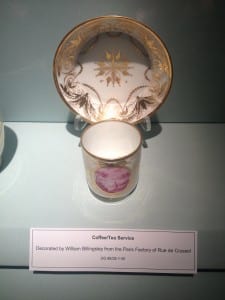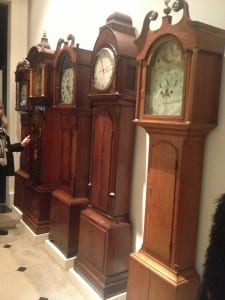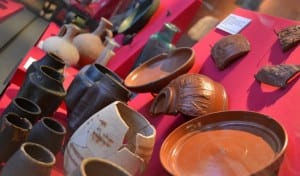Having settled upon an idea and concept for our piece, we thought we’d explain more about the group from whom we took inspiration, namely, Lone Twin. Whilst reading about Lone Twin and their works in Making a Performance, we were interested to read that many ‘artists may also clearly identify themselves as outsiders within a space’ (Govan, Nicholson and Normington 2007, p.125). Being that we ourselves are not ‘locals’ in the traditional sense of the word in Lincoln, it becomes interesting to consider our place instead as strangers, in the Gallery as well as the city itself and its history. Instead of just focusing on the history of the site, we have decided to combine our own histories and city (London) with that of Lincoln. By making our ‘otherness’ obvious, we hope the audience will also be compelled to think about their roots and history.
By effectively sneaking London into the Gallery via a sculpture, costume and a soundscape (fingers crossed), we hope to make the locals and tourists to the area consider their own histories differently. We are not locals to Lincoln, but neither are we complete strangers to the area, and Lone Twin seems to confront this idea head on, with the concept that the artist ‘is both from here and not from here’ (Govan 2007, p.125). While we live in Lincoln, it seems our time here is limited to the three years we will spend on our degrees. Thus, Big Ben and the chimes of the clock are doubly appropriate as it signals both us running out of time in Lincoln as well as the history of the Usher Gallery. We plan on incorporating the chimes of Big Ben into our soundscape along with background noise similar to that of a busy street in London.
Lone Twin have done numerous public pieces, including one entitled Walk With Me, Walk With Me, Will Somebody Please Walk With Me (2002). Throughout the piece, the group ‘remains sensitive to the stories that constitute that space’ (Govan 2007, p.126). This idea seemed central to the thesis of site specific, and also intertwined with our previous knowledge of Lone Twin as a group that moved from space to space whilst considering the ‘placelessness’ of the artist, which we felt related to us personally. As we have previously discussed, we want to include elements of modernity with the history of the space, in keeping with the site specific practice. Considering these elements, Lone Twin seemed perfect as a group to take inspiration from.
Lone Twin’s Street Dance
Author: Lacey Cole.
References : Govan, Emma, Helen Nicholson and Katie Normington (2007) Making a Performance: Devising Histories and Contemporary Practices, Oxon: Routledge.


